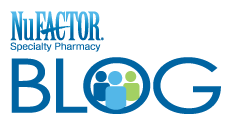
By Michelle Greer, RN, MBA and
Leslie Vaughan, RPh
Healthcare providers who treat Medicare patients often are unsure whether Medicare will pay for intravenous or subcutaneous immune globulin (IVIG or SCIG) in the homecare setting. The reason is many patients are denied reimbursement or have large co-pays. However, Medicare does pay for IVIG and SCIG in the homecare setting in many circumstances, depending upon the patient’s diagnosis, which determines whether they are covered under Medicare Part B or Part D.
So, when does Medicare pay for IVIG in a homecare setting? Patients with a Primary Immune Deficiency Disease (PIDD) that fall under one of five ICD-9 codes (279.04, 279.05, 279.06, 279.12 and 279.2) are covered under Medicare Part B, but only for the IVIG product itself, not for any nursing services or medical equipment needed to deliver IVIG. It’s important to note, though, that patients may have difficulty finding a homecare provider to administer IVIG because:
1) Only the drug is reimbursed.
2) Reimbursement rates may be lower than the cost of the drug.
PIDD patients with one of the five covered diagnoses who are administered SCIG will find it easier to get services in the home. This is because reimbursement rates fall under the Durable Medical Equipment benefit since SCIG is infused with a pump, which means reimbursement rates are higher. That said, the route of IG administration should not be decided based on the reimbursement rate, but rather what is best for the patient.
Patients with diagnoses other than PIDD, such as chronic inflammatory demyelinating polyneuropathy (CIDP), myositis, myasthenia gravis and other conditions, may be able to receive homecare under Medicare Part D. Again, nursing services and supplies are not covered under the Part D benefit. If a patient has a Medicare Advantage plan, nursing and supplies may be covered... Because reimbursement rates are higher under Part D, most homecare providers are able to service Part D patients. And, while Part D reimbursement is more favorable than Part B, patients need to be sure that their disease is covered and that their brand of IVIG is on the provider’s formulary. Prior authorization is typically required for IVIG and SCIG covered under Part D. Most Part D plans require the prescriber to submit for the authorization; however, home infusion providers can assist the prescriber in obtaining and completing the forms for submission.
Providers should be aware that as of Jan. 1, 2011, the Centers for Medicare and Medicaid Services mandated that, as a condition of payment, a physician or non-physician practitioner must have a face-to-face encounter with the patient, regardless of the infusion setting. Documentation of that encounter must be presented on the certification of eligibility for patients with a start of care on or after Jan. 1, 2011. For more details about this requirement, go to http://www.cms.gov/center/hha.asp.
In January of 2013, legislation that may help ease access to administration of IVIG in the home was passed by Congress and signed into law. The Medicare IVIG Access Act (HR 1845/S 960) created a three-year demonstration project allowing for the payment of home infusion services and supplies necessary for IVIG for Medicare PIDD patients. The project intends to prove that home infusion of IVIG is cost effective. Implementation is expected to begin no later than one year after the law was signed. But, enrollment is limited to no more than 4,000 beneficiaries.


